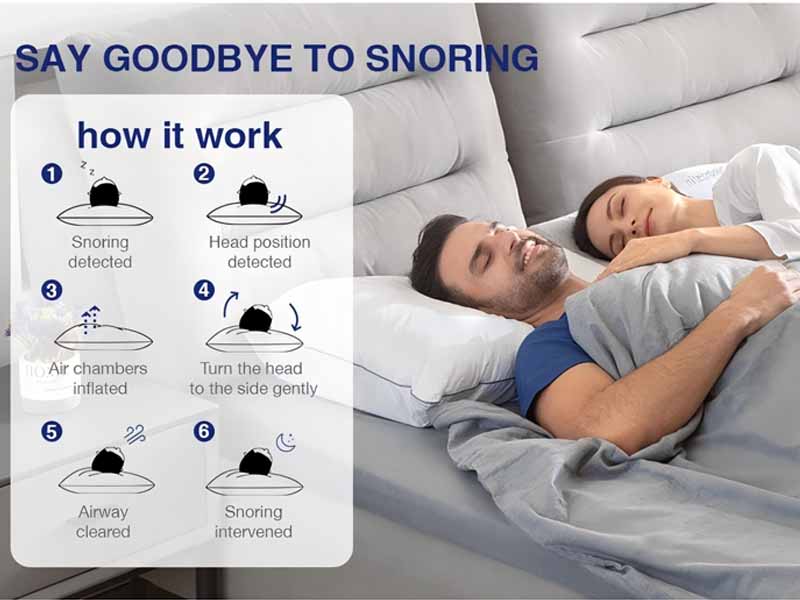Understanding the Technology Behind Anti-Snoring Pillows – How Micro Pumps, Sensors, and Vibration Motors Play a Key Role
- Jerry Wu
- June 20, 2025
- 4:35 pm
- No Comments
With the rising demand for better sleep quality, anti-snoring pillows have become a popular solution in the consumer health and wellness market. These devices are not just passive cushions — many modern designs incorporate intelligent technologies such as micro air pumps, vibration motors, and sensors, enabling real-time feedback and physical adjustment during sleep.
In this article, we’ll explore the main working principles behind anti-snoring pillows and how NJProtech’s core components contribute to these innovative solutions.
1. Sleep Position Adjustment
Problem: Snoring often occurs when individuals sleep on their back, causing the tongue to fall backward and partially block the airway.
Solution: Many anti-snoring pillows use ergonomic shapes or built-in mechanisms to encourage side sleeping, where gravity helps keep the airway open.
Technology Involved:
-
Micro Air Pumps can be embedded to dynamically adjust internal air bladders. When snoring is detected, the pillow gently inflates on one side to nudge the user into a different sleep position.
-
NJProtech offers ultra-compact, low-noise diaphragm air pumps ideal for such embedded systems, delivering quiet and reliable actuation during sleep.
2. Head and Neck Support
Problem: Poor head and neck alignment can constrict the airway, increasing the chance of snoring.
Solution: Anti-snoring pillows are designed to support the natural curvature of the cervical spine, reducing airway compression.
Technology Involved:
-
Some high-end designs use memory foam with embedded shape-adjusting mechanisms powered by internal actuators or mini air systems.
-
NJProtech supplies customizable micro air systems and flow control solenoid valves that help adjust pillow firmness in real-time based on sleep posture.
3. Muscle Relaxation via Vibration Massage
Problem: Tension in the throat or neck muscles can contribute to airway obstruction during sleep.
Solution: Certain pillows integrate gentle vibration massage to stimulate circulation and relax key muscles, reducing snoring frequency.
Technology Involved:
-
Micro vibration motors (similar to those used in wearable massagers) deliver targeted stimulation.
-
NJProtech’s precision vibration motors feature compact size, low power consumption, and high reliability — ideal for sleep tech devices.
4. Real-Time Monitoring and Feedback
Problem: Without feedback, users cannot track snoring patterns or optimize pillow usage.
Solution: Smart pillows embed sound and pressure sensors to monitor snoring behavior and head position, sending data to mobile apps for analysis and feedback.
Technology Involved:
-
MEMS microphones detect snoring frequency and intensity.
-
Pressure sensors track sleep posture and head movement.


NJPRO Technology develops and manufacture an extensive family of miniature air/vacuum/liquid pumps and solenoid valves and related components for demanding and highly sophisticated applications
Quick Link
Contact
Email: info@njprotech.com
Mob: + 86- 18805073518
Whatsapp: + 86- 18805073518

